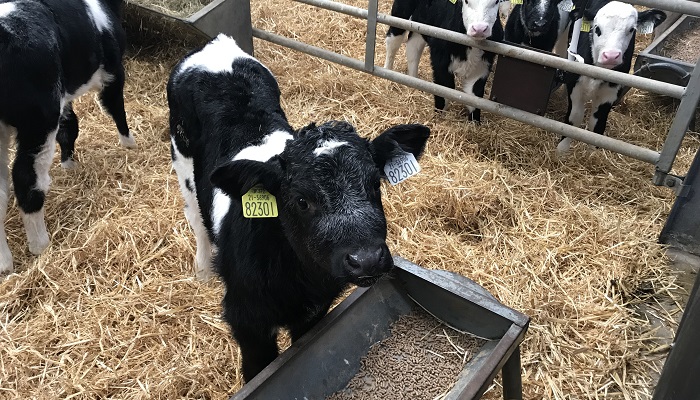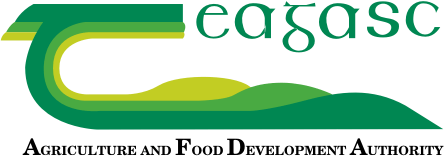07 June 2023
How to produce high Commercial Beef Value calves

On many dairy farms, the decision of what beef bull to use on cows is often based on having a very low calving difficulty, along with having as short a gestation as possible.
While it makes sense to use these type of bulls to reduce difficult calvings and increase days in milk, Fergal Maguire, DairyBeef 500 Advisor explains these traits often come at the expense of beef traits such as carcass weight and live weight gain.
This results in beef farmers rearing these calves struggling to have adequate carcass weights to meet meat factory specifications, which – in turn – reduces the level of income that these dairy calf to beef enterprises can generate. The use of the Commercial Beef Value (CBV) and Dairy Beef Index (DBI) to produce better quality calves from the dairy herd is highlighted below.
Commercial Beef Value – a tool to identify higher beef merit calves
- The CBV is a value that is available for all cattle that are likely to be finished as beef cattle. Cattle that have a high CBV will, on average, be faster growing, grade better at slaughter, meet market specifications at a younger age and will not eat as much per kg live weight gained.
- Going forward, dairy farmers should expect more calf buyers to focus on purchasing calves from farms that are producing high CBV calves.
- Producing higher CBV calves should result in a more saleable calf for the dairy farmer and a more economically viable beef animal for the calf purchaser.
How does the CBV work?
Animals are assigned to one of three different breed types under the CBV, which is dependent on sire and dam breed. These are: beef x beef; beef x dairy; and dairy x dairy. Similar to the Terminal and Replacement Index, animals are assigned a star rating of one to five, with a five star animal being in the top 20% of the national population within that breed type, whereas a one star animal is within the bottom 20%.
Table 1: Threshold CBV values per star rating and animal type
| Star rating | Suckler | Beef x dairy | Dairy x dairy |
|---|---|---|---|
| Five star | >€302 | >€124 | >€44 |
| Four star | >€265 | >€79 | >€30 |
| Three star | >€228 | >€69 | >€18 |
| Two star | >€178 | >€44 | >€1 |
| One star | <€178 | <€44 | <€1 |
Dairy Beef Index
The Dairy Beef Index (DBI) is a tool for dairy farmers to improve the quality of their beef calves, without compromising on essential characteristics such as easy calving and short gestation. The DBI comprises of three sub-indexes, Calving Sub Index, Beef Sub index and Carbon Sub Index.
Many dairy farmers will be familiar with the Economic Breeding Index (EBI). The DBI is similar in that it is expressed in euros, the higher the euro value the better. A bull with a high DBI should pass on more desirable characteristics to its progeny than a bull with a low DBI. Consequently, progeny from a high DBI bull should generate more revenue than a low DBI bull.
How to produce high Commercial Beef Value calves
Farmers will need to drill down into the DBI figures and focus on the Beef Sub Index to produce a calf that has a high Commercial Beef Value. Many of the traits in the CBV are also included in the Beef Sub Index of the EBI for dairy animals and in the Beef Sub Index of the DBI for beef bulls. The tables below show the minimum beef sub index that you should be looking for in a bull in order to breed 4-5 star CBV calves from the different cow types that are common in Ireland.
Table 2: Poor beef merit dairy dam (EBI Beef Sub Index of -€35)
| Target | Bull Beef SI required | No. of bulls on active bull list with <5% calving difficuly |
|---|---|---|
|
4-star CBV calf (Top 40% of beef x dairy calves) |
€108 | 28 |
|
5-star CBV calf (Top 20% of beef x dairy calves) |
€151 | 8 |
Table 3: Average beef merit dairy dam (EBI Beef Sub Index of -€2)
| Target | Bull Beef SI required | No. of bulls on active bull list with <5% calving difficulty |
|---|---|---|
|
4-star CBV calf (Top 40% of beef x dairy calves) |
€76 | 82 |
|
5-star CBV calf (Top 20% of beef x dairy calves) |
€119 | 23 |
Table 4: High beef merit dairy dam (EBI Beef Sub Index of €10)
| Target | Bull Beef SI required | No. of bulls on active bull list with <5% calving difficulty |
|---|---|---|
|
4-star CBV calf (Top 40% of beef x dairy calves) |
€63 | 102 |
|
5-star CBV calf (Top 20% of beef x dairy calves) |
€106 | 31 |
Dairy farmers aiming to produce quality beef calves should group cows according to the risk of having a difficult calving, e.g. 1. maidens, 2. second calvers or small framed cows and 3. mature cows. They then need to identify the maximum calving difficulty that they are happy with for each group and select bulls with the highest beef sub-index at their chosen level of calving difficulty to give the calf with the highest CBV at the other side.
For more information on the Teagasc DairyBeef 500 Campaign, visit the webpage.
